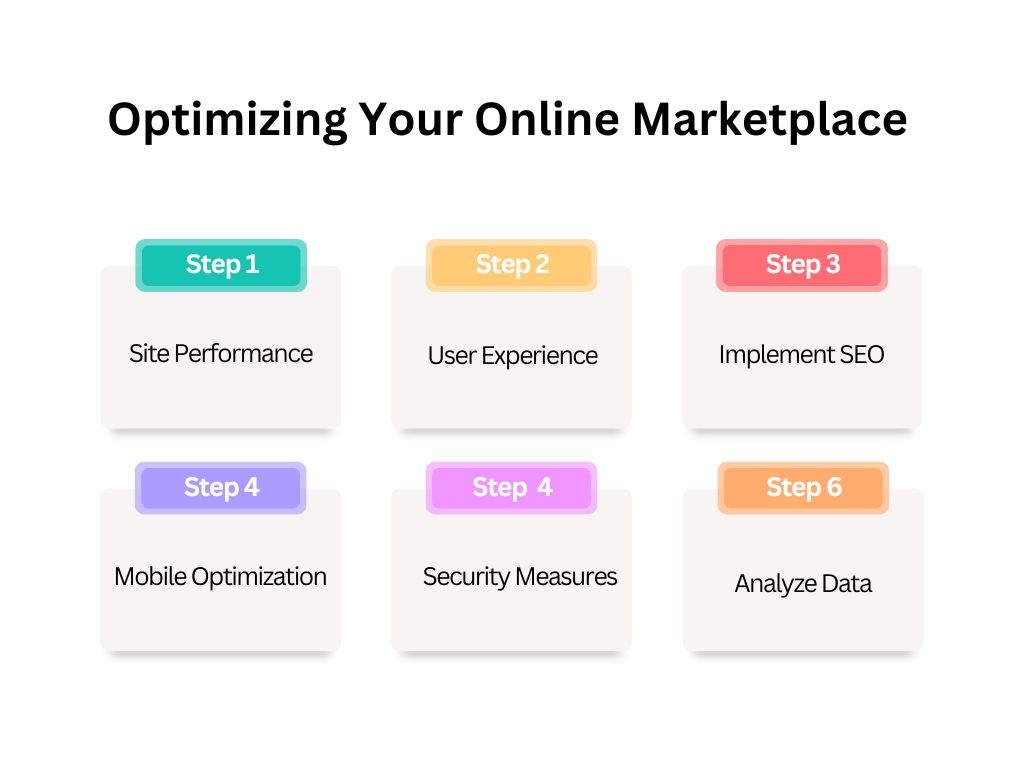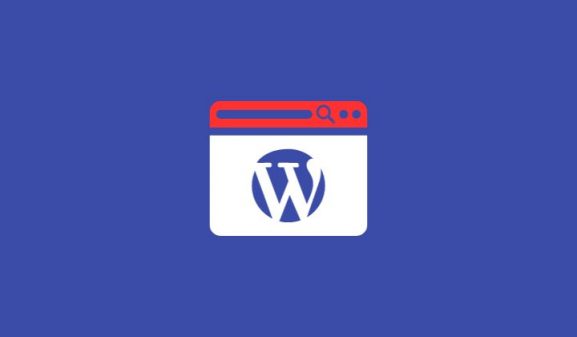Creating an online marketplace using WordPress is a fantastic way to tap into the digital economy and connect buyers with sellers on a global scale. With the rise of e-commerce, launching a marketplace platform has become a viable and lucrative venture for entrepreneurs. According to Hostinger, eCommerce sales could reach 23% of global retail sales by 2027., underscoring the immense potential of online sales channels.
In this article, you will learn:
- The basic requirements for starting an online marketplace.
- Step-by-step guide to setting up your marketplace using WordPress.
- Tips for optimizing and scaling your online marketplace.
Understanding Online Marketplaces

An online marketplace is a digital platform where multiple sellers can list their products or services for sale to a wide range of customers. Think of it as a virtual shopping mall, where each store represents a vendor on your site. Successful examples include Amazon, Etsy, and eBay, which host products from various categories and serve millions of customers worldwide.
Launching an online marketplace offers several benefits:
- Access to a Larger Customer Base: Sellers get to reach customers they might not have found otherwise, while buyers enjoy a vast selection of products in one place.
- Streamlined Operations: Marketplace owners manage the platform, while vendors handle inventory and shipping, reducing the operational load.
- Revenue Opportunities: Marketplace owners can earn through listing fees, commissions, or subscription models, creating a continuous income stream.
Do you know? How Much Does it Cost to Develop a Marketplace App?
Pre-Requisites for Creating an Online Marketplace
Before you dive into building your online marketplace, there are a few essentials you need:
- Domain Name and Hosting: Your domain name is your online identity, so choose something memorable and relevant to your marketplace. Hosting is where your website’s data is stored, and it’s crucial to select a reliable provider to ensure your site remains accessible and fast.
- WordPress Installation: WordPress is the foundation of your website. Many hosting services offer easy, one-click installations of WordPress, making it straightforward to get started.
- Choosing the Right WordPress Theme and Plugins: For a marketplace, you need a theme that supports multi-vendor functionality and is compatible with e-commerce plugins like WooCommerce. Look for themes specifically designed for online marketplaces, as they’ll offer the features and design elements you need. Essential plugins include WooCommerce for e-commerce capabilities and additional plugins like Dokan or WC Vendors to add multi-vendor functionality to your WooCommerce store.
Selecting the right combination of theme and plugins is crucial for creating a user-friendly, efficient, and scalable marketplace. With these foundational elements in place, you’re well on your way to launching a successful online marketplace.
Embarking on the journey to create your own online marketplace with WordPress is an exciting venture filled with opportunities. Let’s dive into the essentials and guide you through the process of setting up, optimizing, and scaling your marketplace to success.
Let’s start with basics,
What Is WordPress?

WordPress is a powerful tool that makes creating websites accessible to everyone, regardless of technical expertise. It’s a content management system (CMS) that allows you to build, customize, and manage websites through a user-friendly interface. Originally developed as a blogging platform in 2003, WordPress has evolved into a versatile CMS, enabling users to create a wide range of websites from blogs to e-commerce stores.
One of the key strengths of WordPress is its flexibility. With thousands of themes and plugins available, you can tailor your site to meet your exact needs and preferences. Whether you’re looking to start a blog, run a business website, or launch an online marketplace, WordPress provides the foundation and tools necessary to bring your vision to life.
Moreover, WordPress is open-source software, which means it’s free to use and modify. A large community of developers and users contribute to its ongoing development and support, ensuring the platform remains up-to-date with the latest web standards and technologies.
In essence, WordPress is the starting point for anyone looking to establish an online presence. Its ease of use, scalability, and extensive support community make it an excellent choice for creating an online marketplace.
What Is WooCommerce?
WooCommerce is a free, open-source plugin designed specifically for WordPress, transforming your website into a fully functional online store. It’s the most popular e-commerce solution for WordPress users, offering a comprehensive set of features to sell products and services online.
What makes WooCommerce stand out is its flexibility and customizability. It seamlessly integrates with your WordPress site, allowing you to add product listings, shopping carts, and checkout processes without needing to know how to code. Whether you’re selling physical goods, digital downloads, or subscriptions, WooCommerce provides all the tools you need to manage your inventory, take payments, handle shipping, and track orders.
Beyond its core functionalities, WooCommerce is supported by a wide array of extensions and plugins. These add-ons enable you to extend your store’s capabilities, offering additional features like payment gateways, shipping calculators, and marketing tools. This ecosystem of extensions ensures that WooCommerce can adapt to the unique needs of your online marketplace, providing a tailored shopping experience for your customers.
WooCommerce is the engine behind many online stores built with WordPress, offering a robust and user-friendly platform for entrepreneurs to launch and grow their e-commerce businesses.
Amazing WooCommerce Facts:
- 4,414,537 live websites are currently using WooCommerce.
- WooCommerce is used by 7.4% of all websites.
- WooCommerce powers over 28.19% of all online stores.
- 22% of the top 1 million ecommerce sites use WooCommerce.
- 93.7% of all WordPress ecommerce websites use the WooCommerce plugin. (Source)
What Is a Marketplace?

A marketplace is an online platform where multiple vendors come together to sell their products or services to a wide audience. Unlike traditional e-commerce websites that typically sell goods from a single business, a marketplace facilitates transactions between buyers and sellers from various backgrounds. This model provides a unique opportunity for small businesses and individual entrepreneurs to reach customers they might not have access to otherwise.
Marketplaces can be specialized, focusing on a specific niche like handmade crafts or vintage items, or they can be more general, offering a wide range of categories similar to giants like Amazon and eBay. The key advantage of a marketplace is the variety it offers to consumers, allowing them to compare products, prices, and sellers all in one place.
For entrepreneurs, creating a marketplace presents an exciting business model. It allows you to curate a community of vendors and earn revenue through listing fees, commissions, or subscription models. Additionally, by leveraging the collective inventory of your vendors, you can offer a vast selection of products without the need for substantial upfront investment in stock.
A marketplace is a collaborative ecosystem that benefits all parties involved – vendors gain visibility and access to customers, consumers enjoy a wide selection of products, and marketplace owners can build a profitable business by connecting the two.
Must Read: How Much Does It Cost to Develop an NFT Marketplace?
What Do You Need to Start an Online Marketplace using WordPress?
Starting an online marketplace with WordPress requires a blend of the right tools, a strategic approach, and a clear vision.
First, make sure you’re using the appropriate website platform, which you are if you’re reading this page.
There are two versions of WordPress: WordPress.com and WordPress.org. One is a limited blog hosting service, while the other is known as self-hosted WordPress, which you’ve probably heard a lot about. See the full comparison of WordPress.com vs. WordPress.org.
We prefer WordPress.org because it provides complete independence and access to all WordPress capabilities out of the box.
To create an online marketplace website similar to Etsy or eBay, you’ll need the following goods. Here’s a breakdown of the essential components you need to get your marketplace up and running:
- Domain Name and Hosting: Your domain name is your website’s address on the internet, while hosting is where your site lives. Choose a domain name that reflects your marketplace and is easy to remember. For hosting, select a reliable provider that offers good performance and support for WordPress websites.
- WordPress Installation: WordPress serves as the foundation of your online marketplace. Most hosting providers offer a one-click installation process, making it straightforward to get WordPress up and running on your site.
- E-commerce Plugin (WooCommerce): As discussed earlier, WooCommerce is the go-to e-commerce plugin for WordPress. It will transform your WordPress site into an online store, allowing you to add products, manage orders, and process payments.
- Marketplace Plugin or Theme: While WooCommerce handles the e-commerce aspect, you’ll need a marketplace plugin or a theme designed for marketplaces to introduce multi-vendor functionality. These tools allow multiple sellers to list their products, manage their inventory, and track their sales directly from your platform. Some popular options include WC Vendors, Dokan, and WCFM Marketplace.
- Payment Gateway Integration: Offering a secure and seamless payment process is crucial. Integrate reliable payment gateways like PayPal, Stripe, or Square to enable transactions on your marketplace. These services handle the payment process, ensuring security and convenience for both buyers and sellers.
- SSL Certificate: An SSL certificate encrypts data transferred between your site and its users, essential for protecting sensitive information like payment details. Most hosting providers offer an SSL certificate as part of their hosting package.
By gathering these components, you’re laying a solid foundation for your online marketplace. With WordPress and WooCommerce at the core, supplemented by the right marketplace tools, you’re well on your way to creating a platform where vendors and customers can connect and transact.
Steps to Create an Online Marketplace Using WordPress
Creating an online marketplace with WordPress might seem daunting, but by following these steps, you can simplify the process:
Step 1. Install WordPress
Installing WordPress is your first step towards creating an online marketplace. This process can usually be done through your web hosting control panel. Look for the “WordPress” or “Website” installer section. With just a few clicks, you can have WordPress installed on your domain.
It’s important to choose a strong username and password during this process to keep your site secure. Once installed, you’ll have access to the WordPress dashboard, where you can start customizing your site. This step lays the foundation for your marketplace.
Step 2. Choose a Marketplace Theme
The right theme sets the tone for your marketplace. When selecting a theme, prioritize responsiveness, ensuring it looks good on both desktop and mobile devices. Additionally, check for WooCommerce and marketplace plugin compatibility to avoid any technical issues.
Themes like Marketo, Martfury, or ShopMe offer built-in features specific to online marketplaces, such as vendor dashboards and product listing layouts.
Customization options are also crucial, allowing you to align the theme with your brand’s visual identity. A well-chosen theme makes your marketplace inviting and easy to navigate.
Step 3. Install WooCommerce
WooCommerce transforms your WordPress site into an e-commerce platform. After installing and activating the plugin, you’ll go through a setup wizard to configure basic settings. This includes setting up your store’s currency, payment methods, and shipping options.
WooCommerce also allows you to add product categories, manage inventory, and set tax rates. It’s a versatile tool that caters to a wide range of e-commerce needs, making it essential for your online marketplace. The goal here is to ensure that your platform can handle transactions smoothly and securely.
Step 4. Add a Marketplace Plugin
Integrating a marketplace plugin adds multi-vendor functionality to your WooCommerce store. This enables multiple sellers to list their products on your platform. Each plugin offers different features, but common functionalities include vendor registration forms, commission settings, and vendor dashboards.
Configuring your chosen plugin correctly is vital for managing how vendors interact with your site, including payment distributions and product approvals. This step transforms your e-commerce site into a fully-fledged marketplace where multiple vendors can sell their products.
Step 5. Set Up Vendors
Managing vendors is crucial for a thriving marketplace. Your marketplace plugin will provide tools to manage vendor registrations, set commission rates, and monitor product listings. Decide on your policies for vendor management, such as whether you’ll allow automatic registration or review each vendor manually.
Setting clear guidelines for vendors, including product quality standards and shipping policies, ensures a consistent and trustworthy shopping experience for customers. This step involves creating a structured environment where vendors can easily join your marketplace and start selling.
Step 6. Add Products
Adding products to your marketplace is a collaborative effort between you and your vendors. Ensure that each product listing is complete with detailed descriptions, high-quality images, and correct pricing. For your own listings, you’ll use the WooCommerce interface to add products.
Vendors will use the dashboard provided by the marketplace plugin to submit their products for approval. This process includes categorizing products, setting inventory levels, and choosing shipping options. A diverse and well-organized product selection attracts customers and encourages sales.
Step 7. Customize Your Marketplace
Personalizing your marketplace involves adjusting its aesthetic and functional elements to match your brand. Utilize the customization options in your theme and plugins to modify the layout, color scheme, and typography. Also, consider adding custom pages that explain your marketplace’s concept, policies, and vendor information.
This step is about creating a unique and engaging online space that resonates with your target audience. A well-customized marketplace stands out in the competitive e-commerce landscape, attracting more vendors and customers.
Step 8. Test Your Marketplace
Before officially launching, it’s critical to conduct thorough testing of your marketplace. This includes checking the vendor registration process, product listing and editing capabilities, and the checkout experience. Ensure that all integrated payment gateways work correctly and that the site loads quickly across different devices.
Testing helps identify and fix any issues, ensuring a smooth user experience for both vendors and customers. Consider asking friends or colleagues to help test the marketplace and provide feedback.
Step 9. Launch and Promote
Once you’re confident in your marketplace’s functionality and appearance, it’s time to launch. Announce your marketplace’s opening through social media, email newsletters, and other marketing channels.
Engage with potential vendors and customers to build excitement and draw traffic to your site. Post-launch, continue to promote your marketplace regularly to maintain momentum.
Consider offering launch promotions or special events to encourage sign-ups and sales. The success of your marketplace depends not only on a smooth launch but also on effective, ongoing promotion.
Each of these steps plays a vital role in creating a successful online marketplace with WordPress. Taking the time to carefully execute each phase sets the foundation for a thriving platform that benefits vendors and customers alike.
How to Optimize Your Online Marketplace?
Once your online marketplace is up and running, the next crucial step is optimization. This ensures your platform not only attracts users but also provides them with a seamless and enjoyable shopping experience. Here’s how you can optimize your online marketplace:
Improve Site Performance: Site speed is critical for keeping customers engaged. Use caching plugins, optimize images, and choose a reliable hosting provider to improve loading times. Tools like WP Rocket or W3 Total Cache can significantly boost your site’s performance.
Enhance User Experience (UX): A user-friendly interface encourages customers to spend more time on your marketplace. Focus on intuitive navigation, clear categorization of products, and a straightforward checkout process. Regularly gather feedback from users to identify and address any UX issues.
Implement SEO Best Practices: Optimizing your marketplace for search engines can increase your visibility and attract more visitors. Use SEO plugins like Yoast SEO to optimize your content, meta titles, and descriptions. Ensure your site structure is SEO-friendly and that you’re using the correct keywords to target your audience.
Mobile Optimization: With an increasing number of users shopping on mobile devices, ensuring your marketplace is mobile-friendly is essential. Choose responsive themes and test your site on various devices to guarantee a smooth shopping experience for mobile users.
Security Measures: Protecting your users’ data should be a top priority. Implement strong security measures, including regular updates, secure passwords, and SSL certificates. Consider using security plugins like Word fence to safeguard your marketplace against threats.
Analyze and Act on Data: Use analytics tools like Google Analytics to monitor your marketplace’s performance. Track user behavior, conversion rates, and other key metrics to identify areas for improvement. Make data-driven decisions to refine your strategies and enhance your platform.
Optimization is an ongoing process that requires regular attention and adjustments. By focusing on these areas, you can create a more efficient, user-friendly, and successful online marketplace.
Also Read: Advantages & Disadvantages of Innovative Technology
How to Scale up Your Online Marketplace?
After optimizing your online marketplace, the next step is to scale it. Scaling involves expanding your marketplace to reach more customers and vendors, thereby increasing your revenue. Here’s how you can effectively scale your online marketplace with WordPress:
Attract More Vendors: The success of your marketplace largely depends on the variety and quality of products available. Implement strategies to attract more vendors, such as offering incentives for the first few months, providing marketing support, or showcasing top vendors on your homepage.
Enhance Your Product Offerings: Diversify the products available on your marketplace. Consider adding new categories or encouraging vendors to list unique items. The more comprehensive your marketplace, the more appealing it will be to a broader audience.
Invest in Marketing: Utilize various marketing channels to promote your marketplace. This can include social media advertising, content marketing, email campaigns, and pay-per-click (PPC) advertising. Tailor your marketing efforts to target both potential vendors and customers.
Leverage Social Proof: Customer reviews and testimonials can significantly impact your marketplace’s credibility and attract more users. Encourage satisfied customers to leave positive reviews and use these testimonials in your marketing materials.
Integrate Additional Functionalities: As your marketplace grows, consider adding new features to enhance the user experience. This could include advanced search filters, a loyalty program, or personalized product recommendations. Plugins and extensions can help you introduce these functionalities without extensive development work.
Focus on Customer Service: Providing excellent customer service can set your marketplace apart from competitors. Implement a reliable support system where users can easily get help with their queries or issues. Happy customers are more likely to return and recommend your marketplace to others.
Analyze and Adapt: Regularly review your marketplace’s performance data to understand what’s working and what isn’t. Be prepared to adapt your strategies based on market trends, customer feedback, and performance metrics. Continuous improvement is key to long-term success.
Scaling your marketplace requires a strategic approach and a focus on both attracting new users and retaining existing ones. By following these steps, you can grow your online marketplace into a thriving community that benefits vendors, customers, and your business.
Also Read: How Much Does It Cost to Build a Dating App? A Comprehensive Guide
Top Challenges and Solutions of Growing an Online Marketplace
Growing an online marketplace comes with its set of challenges. Recognizing these challenges early on and finding effective solutions is key to maintaining a healthy, thriving marketplace. Here are some common challenges and how to tackle them:
- Vendor Management
Challenge: Managing multiple vendors can become complex, especially when it comes to ensuring quality and consistency.
Solution: Implement clear guidelines and standards for vendors. Use automated tools for vendor onboarding, monitoring product listings, and managing commissions to streamline operations.
- Customer Trust
Challenge: Building trust with first-time customers can be difficult, particularly in a crowded market.
Solution: Prioritize transparency by providing detailed product descriptions, honest vendor ratings, and a clear return policy. Implementing a secure payment gateway and showcasing customer testimonials can also bolster trust.
- Marketplace Differentiation
Challenge: Standing out in a competitive landscape where new marketplaces are constantly emerging.
Solution: Focus on a niche market or offer unique value propositions, such as exclusive products, exceptional customer service, or loyalty rewards. Tailor your marketing strategy to highlight what sets your marketplace apart.
- Scaling Issues
Challenge: Scaling the marketplace while maintaining performance and user experience.
Solution: Invest in scalable hosting solutions and continuously monitor site performance. Plan for gradual scaling that aligns with your technical capacity and market demand.
- Regulatory Compliance
Challenge: Navigating the complex web of e-commerce regulations, taxes, and international shipping laws.
Solution: Stay informed about relevant laws and regulations. Consider consulting with legal experts to ensure compliance and avoid potential legal issues.
- User Engagement
Challenge: Keeping customers and vendors engaged and active on the marketplace.
Solution: Implement features that encourage interaction, such as forums, reviews, and social sharing. Regularly update content and run promotions or competitions to keep users interested.
By anticipating these challenges and preparing solutions, you can ensure your marketplace remains a competitive and appealing platform for both vendors and customers.
Final Say
Building and scaling an online marketplace with WordPress is a journey filled with learning and opportunities. Starting with the basics, we’ve explored how to leverage WordPress and WooCommerce to create a platform that connects vendors and customers. By following the step-by-step guide, you can set up your marketplace, optimize it for the best user experience, and implement strategies for growth and scalability.
Throughout this journey, you’ll face challenges ranging from vendor management to maintaining customer trust. However, with the right approach and solutions, these obstacles can be overcome, leading to a successful and thriving online marketplace.
As you continue to grow and refine your marketplace, remember that the key to success lies in continuous improvement and adaptation to the evolving needs of your users and the market. The world of e-commerce is dynamic, and staying ahead requires innovation, perseverance, and a keen understanding of your audience.
Related FAQs
Can I use any WordPress theme for my online marketplace?
Not all themes are suited for an online marketplace. Choose a theme specifically designed for e-commerce and marketplaces for the best compatibility with WooCommerce and marketplace plugins.
Is WooCommerce free to use for creating an online marketplace?
Yes, WooCommerce is a free plugin. However, some extensions and themes for advanced functionalities might require a purchase.
How do I handle payments in my online marketplace?
WooCommerce supports various payment gateways like PayPal, Stripe, and others. You can choose and integrate the ones that best fit your marketplace needs.
Can I set different commission rates for different vendors?
Yes, most marketplace plugins offer the flexibility to set individual commission rates for each vendor based on your agreement with them.
How can I ensure the security of my online marketplace?
Regularly update your WordPress, themes, and plugins. Use reputable security plugins, implement strong passwords, and acquire an SSL certificate to enhance your marketplace’s security.





